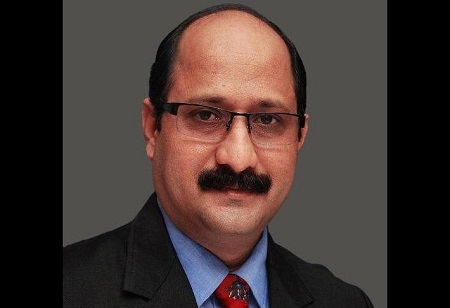Umesh Jadhav, Senior Director, I&F Operations, CIF South Asia, Bureau Veritas in an interaction with the Industry Outlook team, shares his insights on the process safety market, data management, process hazard analysis, and more.
The global Process safety services market is expected to reach USD 28,204.88 million by 2027. How do you see this market developing in India? What are the key factors driving the growth?
Process Safety in India is quite robust in High Risk Markets such as Oil & Gas, Petro-Chemical & Chemicals. Process Safety Services has immense scope in other sectors such as Auto, Manufacturing, Steel, Food, Pharma, etc.
The Key factors which will drive growth for Process Safety Services are:
Managing & Mitigating the Risk
Green Initiatives
Work place safety (Human Factor)
Reduction in operation cost
High Efficiency production
Poor data management of incident records and the lack of adequate programs to use them makes PSM difficult. Moreover, robust documentation systems cost money and industries are often reluctant in spending money without a business case. How do you see this issue in respect to Indian industries? How can effective data management be performed?
The issue of data management is a question which needs to answer at the Design Stage of the manufacturing / production process phase by any industry and this can happen only if we have the will and inclination towards accepting the advantages as listed in previous answer.
The question of inadequate database / incident records / lack of adequate programs could be addressed with the help of knowledge sharing from matured markets such as Europe, which has invested quite robust in Process Safety Services and having enough SMEs.
Industry 4.0 will drive changes in the process industries in the coming years. How should the sites approach to add adequate layers of protection in place to protect against any new risks presented by Industry 4.0 designs? What role does Process Safety Service providers like Bureau Veritas have in this for a smooth transition to Industry 4.0? Despite the rise of Industry 4.0, the ability to manage a wide range of human and asset risks remains a major challenge for industrial operators. Safety, production efficiency, reliability, and asset integrity are just some of the areas that require ongoing inspection. In the past, a key focus has been on gathering sample data that can be used to give a statistical assessment of asset condition – and it was only valid for a given point in time.
Today, inspection is changing. A combination of technologies - led by the Industrial Internet of Things, robotics, and artificial intelligence - is transforming the inspection of industrial assets. Thanks to the automated collection and analysis of data, companies can increase the safety and reliability of their assets, while reducing the time and costs of annual inspections. Such technologies can also be used to create 3D models of assets, containing real data and making it easier to manage operations.
The main issues in implementing a Process Hazard Analysis are that the regulations do not always define the set of criteria for conducting it. Also, it could be ignored as it requires a significant number of personnel and expertise. What role does the Process Safety service have to overcome this hurdle? How is Bureau Veritas dealing with the same?
We have partnered with Avitas Systems, a GE Venture introducing analytics-based inspection in the market. We have advanced our independent inspection services with the Avitas Systems cloud-based platform, combining automated data collection and artificial intelligence techniques. Avitas Systems provides the integration of technologies such as sensors, drones, and other robotics, paired with bespoke deep learning-based data analytics.
The solution offers several advantages. By combining technologies, technical expertise, and data analytics, we will be able to automatically recognize asset defects and deliver results via an online interface with user-accessible data and reporting. New technologies will prevent inspectors from working in high-risk and repetitive working conditions and will improve overall safety and efficiency. Overall, the solution will bring continuous industrial risk management to a new level for asset owners.
Perception and perspectives about the advantage of good process safety culture in developing countries are still struggling. Stakeholders and top management are not engaged unless there is a public outcry. How do you see this in respect to India? How do you propose to troubleshoot this?
The discussion has to pivot from safety to risk. Risk is the language of corporate management, and it understands the ROI of risk. The scope also becomes larger in a risk conversation because more aspects of automation feed the risk equation, like maintenance and alarm management. Looking at overall risk offering the management should look to partner with suppliers that can additively build out a risk portfolio and make risk near real-time and visible.
How do you see the future of the Process safety services market in India?
India is expected to have a big investment in core sectors such as Infrastructure and manufacturing as west is looking forward to INDIA to be next best alternative for manufacturing to China.
This investment in manufacturing and process industry will bring in new technologies and systems in place and will revamp the understanding of process safety culture in India. It will be adapted well by the industry as it will bring them confidence in managing the assets and people well as well as give returns in long run taking care of Green Initiatives as well as Human Life.
